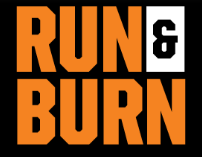Embarking on a new journey often begins with thorough moving preparation. As the day of transition approaches, the importance of efficient packing cannot be overstated. It’s a task that can dictate the success of your transition, minimizing chaos and ensuring a smooth process.
The right choice of packing materials is crucial in safeguarding your belongings throughout the journey. Selecting the ideal moving boxes and protective supplies will not only enhance the organization of your items but also contribute to a more stress-free relocation.
By following smart packing tips and maintaining a structured approach, you’ll find your organized moving experience greatly enhances the entire process. A well-planned arrangement facilitates not only ease of transport but also quick setup in your new home.
Choosing the Right Packing Materials
Selecting appropriate packing materials is crucial for an organized relocation. Quality supplies not only protect belongings but also simplify the entire process. To ensure a seamless experience, consider the following options:
- Boxes: Invest in sturdy cardboard boxes in various sizes to accommodate different items. Use smaller boxes for heavy items and larger ones for lighter objects.
- Bubble Wrap: This is ideal for fragile items. Wrap delicate objects individually to prevent breakage during transit.
- Packing Paper: Utilize packing paper for wrapping dishes and glassware. It’s an excellent alternative to newspaper, as it won’t leave ink stains.
- Stretch Film: This material is perfect for securing furniture and keeping drawers closed. It is also useful for bundling smaller items together.
- Tape: High-quality packing tape is essential for sealing boxes. Look for wide, durable tape that can withstand weight and pressure.
In addition to these essentials, consider the following packing suggestions:
- Labeling: Clearly mark each box with its contents and the room it belongs to. This will facilitate an organized unpacking process.
- Environmentally-friendly Options: Explore biodegradable or recycled packing materials to contribute to a sustainable move.
- $Savings: If budget is a concern, seek out free boxes from local businesses or use blankets and towels as protective padding.
Utilizing the best packing strategies will lead to a stress-free relocation. As you gather supplies, keep in mind that preparation is key to an effective transition. By choosing the right materials, you set the stage for a smooth experience.
Creating a Packing Timeline to Stay Organized
To ensure a stress-free relocation, establishing a packing schedule is essential. Begin by outlining a timeline that allows ample time for each task. Having a structured plan will aid in managing your moving preparation effectively and prevent last-minute rushes.
Start by determining your moving date and work backward to create a comprehensive checklist. Make sure to include tasks such as sorting belongings, obtaining moving boxes, and packing items by category. Spreading these tasks over several weeks will result in an organized moving experience.
Incorporate specific packing tips into your timeline, like labeling boxes as you pack them. This will enhance the efficiency of unpacking at your new home. Another key aspect of your timeline should involve setting deadlines for finishing certain tasks, which helps keep you accountable and on track.
Utilizing the best packing strategies can also be beneficial while adhering to the timeline. Consider enlisting friends or family to assist on designated packing days to make the process smoother and more enjoyable.
For further assistance with your moving journey, you can visit https://bigmannmovingservices.com for additional resources and tips.
By following a well-structured timeline, you’ll minimize chaos and ensure that everything is taken care of, leading to an efficient relocation process. For more valuable information, check out https://bigmannmovingservices.com.
Strategies for Packing Fragile and Valuable Items
When it comes to a stress-free relocation, ensuring the safety of delicate and precious belongings is paramount. Start by gathering high-quality moving boxes that provide ample protection. Opt for double-walled cartons for heavier items and utilize smaller boxes for more fragile pieces to minimize movement during transit.
Implementing the best packing strategies involves cushioning every item. Use bubble wrap, packing paper, or even old towels to surround fragile objects. Be generous with padding to absorb shocks and prevent breakage. When arranging items in the boxes, place the heaviest items at the bottom and lighter pieces on top to maintain stability.
Labeling each box clearly is crucial for an organized moving process. Indicate which boxes contain fragile items and their contents. This not only assists movers in handling these boxes with care but also helps you easily locate valuables upon arrival at your new destination.
During the moving preparation, consider creating a designated “essentials” box containing immediately needed items, such as important documents and personal effects. This approach not only safeguards valuable belongings but also simplifies access right after the transition. Following these packing tips will ensure your treasured items remain intact, making your entire experience smoother and more enjoyable.
Labeling Techniques to Simplify Unpacking
Effective labeling can transform the chaos of relocation into an organized experience. By implementing smart strategies during your moving preparation, you can ensure that unpacking is a breeze. Start with a color-coding system where each room is assigned a specific color. Use colored tape or stickers on your moving boxes to signify where each item belongs in your new home.
In addition to color-coding, descriptive labels are essential. Instead of simply marking a box as “kitchen,” be specific and note “dinnerware” or “cooking utensils.” This extra detail allows for quicker access to needed items upon arrival. Utilize large, clear fonts for readability and consider writing the contents on multiple sides of the box to make identifying them easier from different angles.
An additional tip involves numbering your moving boxes. Keep a master list that matches the numbers with their corresponding contents. This can help track your belongings and ensure no box goes missing during the transition. Moreover, you can include the room assignment beside each number for further clarity.
Finally, consider using a labeling app or digital tool to record your inventory as you pack. These modern tools can streamline the process, making it easier to manage moving materials and ensuring an organized moving experience. Remember, investing time in labeling now can save you significant effort later during the unpacking stage.
Q&A:
What are the best materials to use for packing fragile items?
When packing fragile items, it’s important to use materials that provide adequate cushioning and protection. Bubble wrap is one of the best options as it offers excellent shock absorption. Additionally, you can use foam sheets or packing paper, which are both effective for wrapping delicate items. To further secure them, consider using sturdy boxes that can withstand pressure and prevent crushing. It’s a good idea to fill any gaps in the box with packing peanuts or crumpled paper to avoid movement during transportation.
How can I keep my moving process organized?
Staying organized during a move can reduce stress and save time. Start by creating a detailed inventory of all your belongings. Label boxes clearly with their contents and the room they belong to in your new home. Consider using a color-coded system for boxes, assigning a different color for each room. A timeline can also be helpful, outlining packing tasks and deadlines leading up to the move. Using a moving checklist ensures that you don’t forget any important tasks, such as notifying utilities and changing your address.
Are there any tips for packing clothing efficiently?
Packing clothing can be simple if you use the right techniques. One effective method is to roll your clothes instead of folding them, as this can save space and minimize wrinkles. For shoes, stuffing them with socks or small items can help protect their shape and also utilize space efficiently. Use vacuum-sealed bags for seasonal clothing to save even more space, and consider packing a separate bag for essentials you’ll need right away to avoid rummaging through multiple boxes post-move.
What should I do with items I no longer need before moving?
Before moving, it’s beneficial to declutter your belongings. Start by going through each room and identifying items that you no longer use or need. You can sell these items online, donate them to local charities, or give them away to friends or family. Organizing a garage sale can also be a great way to earn some money while decluttering. Furthermore, throwing away any broken or unusable items will lighten your load and make your move easier.
How can I pack my kitchen items to avoid damage?
Packing kitchen items requires a bit of strategy to ensure everything arrives safely. Begin by wrapping fragile items like glassware and dishes with bubble wrap or thick towels. For dishes, place sheets of cardboard between them to prevent chipping. Group similar items together and pack heavier items at the bottom of boxes, while lighter items can go on top. It’s also useful to use small boxes for heavy items and larger boxes for lighter items to keep the weight manageable. Make sure to clearly label boxes containing kitchen items, so you know where to find them when you unpack.

Afonso é um profissional dedicado ao universo da corrida, com um foco especial na biomecânica e na nutrição esportiva. Como ex-atleta e formado em Fisioterapia, Afonso entende profundamente a importância de um bom par de tênis e uma dieta balanceada para um desempenho de corrida otimizado

